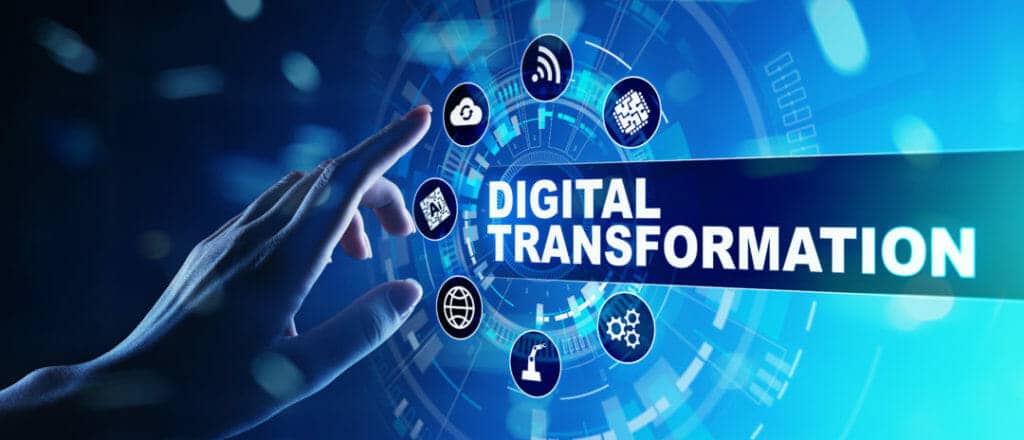
Digital transformation refers to the integration of digital technologies throughout your business processes, which fundamentally alters both your operations and customer services. Consequently, organizations are driven toward digital transformation due to its numerous benefits. Specifically, integrating new technologies improves cumulative efficiency and productivity. Moreover, automation enhances staff performance and optimizes data utilization.
Digital transformation aims to collect and utilize vast amounts of data effectively. This data can, furthermore, enhance customer service and, consequently, automate decision-making with cloud-powered AI.
Meanwhile, your workforce can be benefited from a range of fresh applications and technologies that can automate simple responsibilities, freeing them up to concentrate on valuable responsibilities, which ultimately can enhance productivity and revenue generation.
The role of IT infrastructure companies in digital transformation
In the current situation, digitalization and implementation of technologies have become more protruding that leads organizations to adopt high-performing IT infrastructure. Effective IT infrastructure management boosts business processes and customer satisfaction, from employee capabilities to cloud services and tool access. Efficient IT infrastructure support minimizes expenses and enhances processes, leading to a more competitive and flexible work environment. Here are some of the instances of how IT infrastructure can help businesses to perform better.
1. Cloud Migration
Adopting cloud technology is a key transformation for many organizations. With cloud computing, you gain on-demand access to a vast array of applications, remote server capabilities, and secure data storage. Additionally, this approach alleviates the need for extensive maintenance and management activities. Implementation of the cloud also reduces your burden of system update and maintenance as your partner cloud infrastructure company will take care of that.
For smooth cloud migration, IT Infrastructure Company plays a vital role to provide data security during the transition, adapt the latest application, and so on.
2. Mobility
Mobility is crucial in the current landscape. As a result, digital transformation allows your organization to enable employees to work from anywhere at any time, thanks to secure cloud and networking technologies. Consequently, IT infrastructure companies help establish an effective remote working strategy.
Whether your employees are using their own devices or office assets, in both situations, a mobile device management solution is important to provide essential support for secured access to company resources. Your IT infrastructure partner helps to provide secure data and program access, password protection, encrypted data transmission facilities to keep your business running with a distributed team.
3. All-inclusive Security
Digital Transformation needs a much-secured infrastructure to prevent data loss, secure data transmission, and protection from cyber-attacks. While the increased number of devices in a network amplifies the number of attack surfaces, IT infrastructure companies offer secure data access facilities along with encrypted data transmission processes for optimal data security.
IT infrastructure companies provide cutting-edge security tools that effectively detect real-time threats, identify potential data leaks, and minimize virus attacks. Additionally, these advanced tools enhance network security and reduce unplanned outages.
Most of the companies worry the most about data loss and cyber-attack during the digital transformation which makes an IT infrastructure company indispensable for a smooth digital transformation and data migration. Along with the use of cloud technology and mobile device management (MDM) platforms, IT infrastructure companies can secure your data protection and provide you an all-inclusive security service to the organization.
4. Improved service levels
IT infrastructure management services provide the best-in-class support to your customers to resolve their issues; their around-the-clock customer care service helps the clients to satisfy their queries. Efficient customer care service with regional language support is an added benefit for your customers. Along with your customers, an IT infrastructure service partner also keeps your employees satisfied with resourceful IT infrastructure, faster closure of support tickets, and reliable network and system availability.
5. Betterment of Networking
IT infrastructure companies are using Internet of Things (IoT) applications and also help in better network transformation. In the current scenario, different networking tools like routers, switches, and firewalls are replaced by Software-Defined Networking which allows the quick rollout of new services.
6. Greater flexibility and faster time to market for new services:
Digital transformations enable organizations to boost computing power and storage with advanced technologies. Consequently, IT infrastructure companies quickly accommodate servers and adjust storage with flexible pay-as-you-go models. Moreover, leveraging the latest technologies allows IT infrastructure management services to accelerate time to market.
7. Improved Collaboration:
Digital transformation enhances the requirement of virtual collaboration to make the remote working culture successful. IT infrastructure companies enhance communication and support for remote teams with advanced collaboration tools and virtual meeting apps.
8. Dependable and secure infrastructure:
To enhance productivity, a combination of dependable IT infrastructure, secure data storage, and an efficient workforce is essential. Therefore, IT infrastructure companies offer network security, real-time threat protection, and data centers to support reliable business operations. Furthermore, selecting the right IT infrastructure company guarantees improved facilities, data protection, and security, allowing your team to concentrate on productivity.
Conclusion:
Digital transformation is essential for the sustainability of businesses in the current situation. To make your path of digital transformation smooth, you can consider a reliable IT infrastructure company as your partner. An IT infrastructure partner streamlines cloud migration, secures data, and frees your team from maintenance tasks. All these facilities will ultimately contribute to improving productivity.